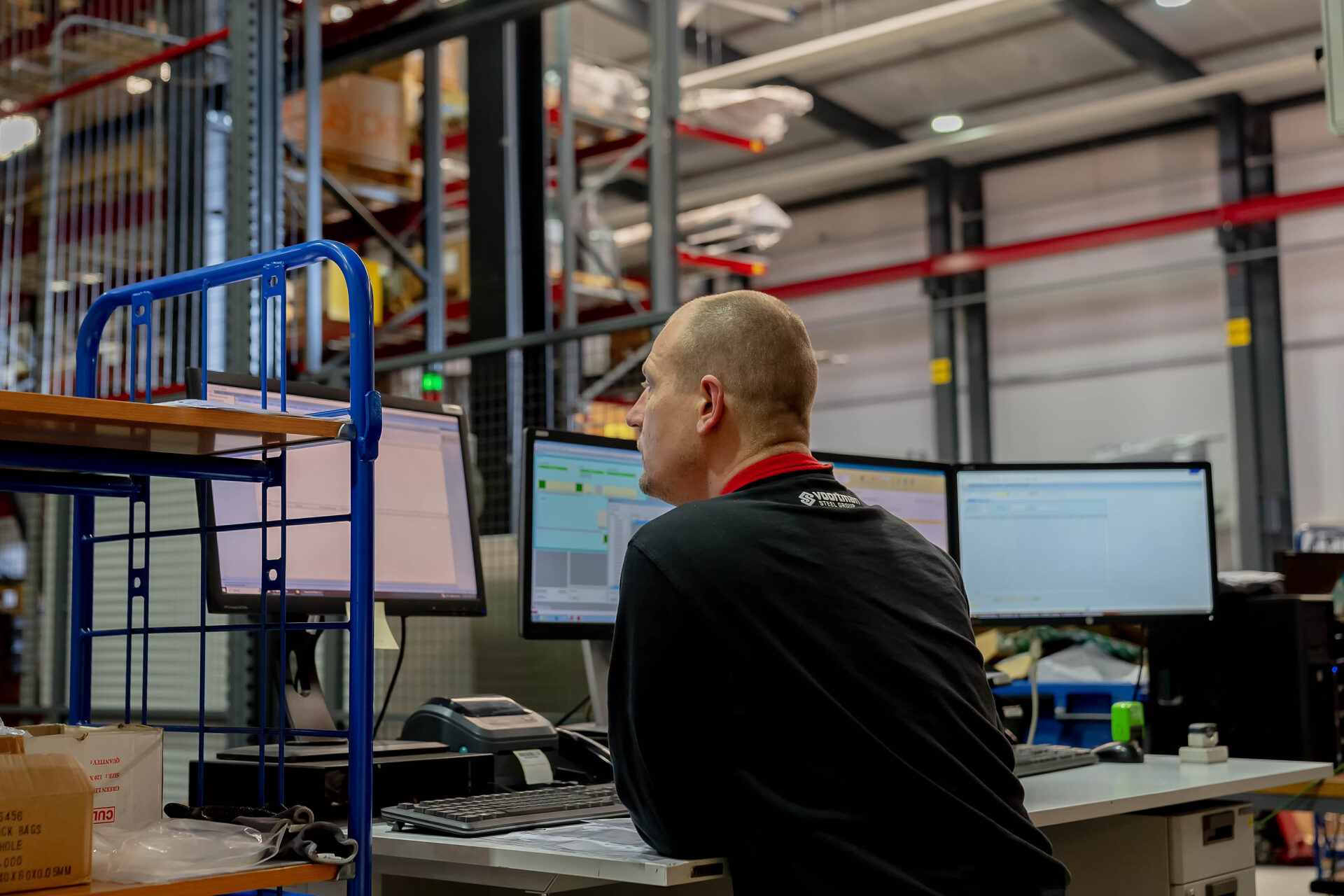Thesis: Truck loading algorithm
In the realm of steel constructions, the efficient transport of steel components poses a significant challenge. This thesis seeks to explore and suggest innovative solutions for improving and automating the loading procedures of steel components onto trucks.
What are you going to do?
Specialists in steel construction fabricate structures by processing beams and welding plates onto them at their manufacturing facility. Following these production processes, the treated beams are then transported from the factory to the designated construction site. Upon arrival, workers assemble the processed beams, resulting in the formation of robust steel constructions. The figure below shows a steel construction.
The construction process follows a well-defined sequence, where careful consideration is given to the assembly order during segmentation. These phases not only determine the production order but also influence the grouping of components loaded onto the same truck. Currently, the manual creation of loading distribution occurs in phases after the release of the 3D model. To ensure efficient distribution, it is crucial that the components arriving on-site are in the same construction phase, facilitating a seamless assembly process and preventing the accumulation of numerous unusable parts in storage. However, this manual approach proves time-consuming, especially for extensive projects.
After the factory processing of beams, they are manually loaded onto trailers using large overhead cranes. This loading process considers requirements such as weight distribution. However, due to manual division, the trucks are not optimally filled. Moreover, the most convenient sequence must be determined during the loading process, as it is not known in advance.
The objective of the assignment is to ensure that all beams arrive at the construction site in the correct order, ensuring that as few trucks as possible are needed overall and as little inventory as possible is left on site that is not used immediately. To achieve this goal, the assignment consists of two parts. Firstly, to devise a method for effectively dividing a building into phases to determine loading distribution. Secondly, to develop a 3D nesting algorithm for the systematic generation of a loading proposal, establishing the optimal loading sequence for transportation.
We offer
- Internship/graduation allowance: €600,- per month;
- Travel allowance: so you do not incur unnecessary expenses;
- Equipment and materials: for example, a laptop, special tools or software;
- Experienced coach: good guidance is important and so you will get a permanent coach to support you;
- Room for personal development: e.g. through training, courses or seminars;
- Opportunity for a (side) job! Do you like working at Voortman? Then we will be happy to offer you a (side) job!
We are looking for
This problem has many aspects that need to be tackled that can be interesting to different study directions:
- Applied Mathematics
- Applied Physics
- Business Information Technology
- Computer Science
- Industrial Engineering & Management
APPLICATION PROCESS
WORKING FOR VOORTMAN STEEL MACHINERY
Seeing ideas become a reality: it sounds nice but it really does happen at Voortman. And these are ground-breaking ideas. We make the most innovative machinery and product lines for the steel construction and plate-processing industry and offer the most comprehensive service. For customers around the world. Going through the process with a customer to arrive at a production line that integrates seamlessly into his process. Regardless of how often we do it, it is special each time and provides a great deal of satisfaction.





